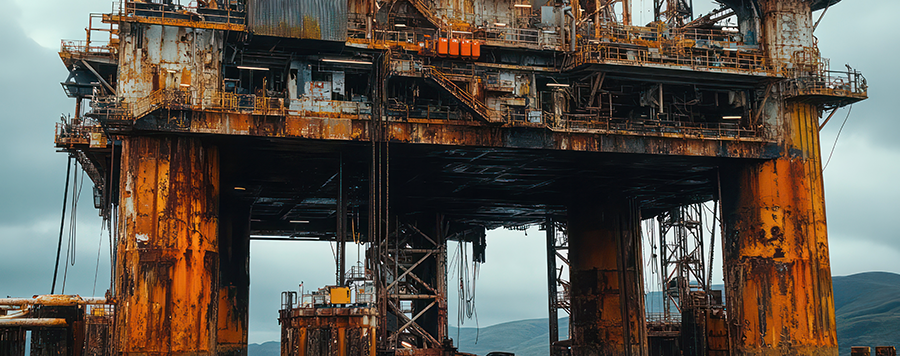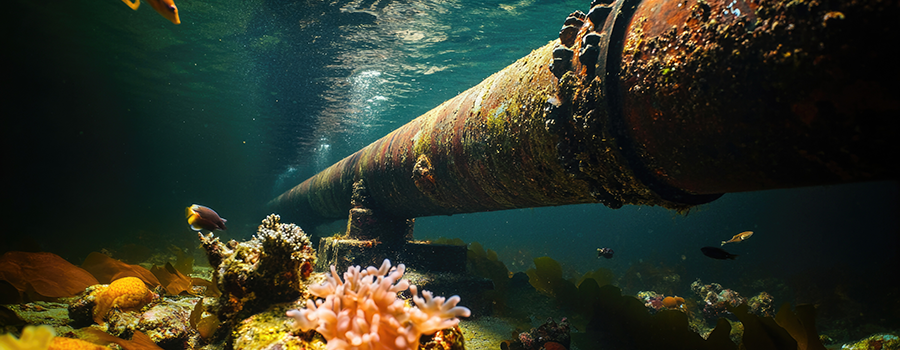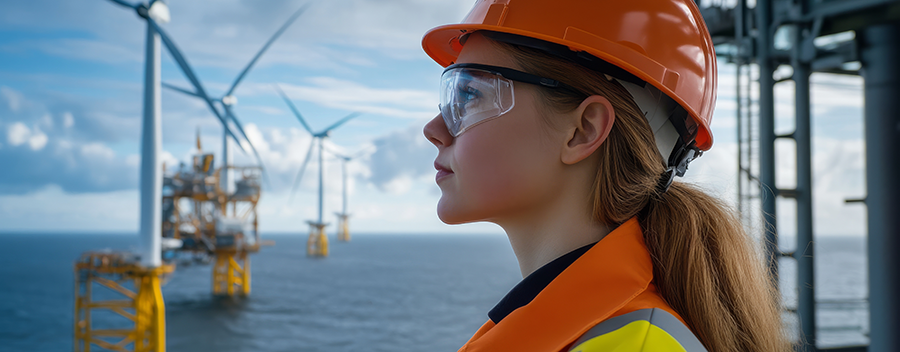What’s in the pipeline for Australia’s offshore oil and gas decommissioning industry
Australia is on the brink of one of the largest offshore decommissioning efforts in its history. Over the coming decades, thousands of tonnes of ageing oil and gas infrastructure – including pipelines, platforms, wells, and subsea equipment – must be removed, repurposed, or safely left in place in compliance with strict environmental and regulatory standards.
The Scale of Decommissioning in Australia
The Centre for Decommissioning Australia (CODA) estimates that approximately 5,695 kilotons of infrastructure, largely comprising steel and concrete, will require decommissioning. This includes 1,008 wells, 57 fixed platforms, 11 floating facilities, nearly 5,000 kilometres of pipelines, and thousands of kilometres of flowlines, umbilicals, and subsea structures. The Gippsland and North Carnarvon Basins are at the forefront of this process, with decommissioning costs in these regions alone projected to reach $11 billion by 2032.
The timeline for full decommissioning extends well into the 2060s and beyond, with further peaks in activity expected between 2033–2037 and 2043–2047 as major offshore projects approach the end of their operational lives.

Understanding the Decommissioning Process
Decommissioning is a routine and inevitable stage in the life cycle of an offshore petroleum project, requiring careful planning from the outset and continuous adaptation throughout its operational life. It involves the safe and responsible removal or management of infrastructure from former oil and gas sites, ensuring compliance with environmental and regulatory standards.
The decommissioning process engages a wide range of specialised businesses across various stages. This includes obtaining approvals, securely plugging wells, dismantling platforms and floating facilities, removing extensive pipeline networks, and transporting materials to shore. Once onshore, materials like steel and plastics are recycled, while waste is meticulously sorted, treated, and disposed of according to strict safety and environmental guidelines.

Legislative Requirements
The registered titleholder is responsible for carrying out decommissioning activities.
The Offshore Petroleum and Greenhouse Gas Storage Act 2006 (OPGGS Act) serves as the primary legislative framework for offshore decommissioning in Australia. A cornerstone of this legislation, Section 572, mandates that titleholders:
- Maintain all structures, equipment, and property within a title area in good condition and repair.
- Remove these assets when they are no longer used for authorised operations.
Moreover, titleholders must submit Environment Plans to NOPSEMA and obtain approval before commencing any activity, including exploration, production, or decommissioning, with revisions and updates required every five years.
In addition, there are many other pieces of legislation governing decommissioning in Commonwealth waters, including international conventions, Australian legislation such as the Environment Protection and Biodiversity Conservation Act 1999 and Environment Protection (Sea Dumping) Act 1981, national policies, and NOPSEMA policies, guidance and information. Many of which are discussed in NOPSEMA’s Offshore Petroleum: Decommissioning Guidelines.

Australian Government’s Decommissioning Framework
Based on the sheer size of the job at hand, the Australian Government recently released the Australia’s Offshore Resources Decommissioning Roadmap, following on from a prior consultation in 2024.
The Offshore Resources Decommissioning Roadmap is a comprehensive strategy developed to establish a sustainable, efficient, and globally competitive decommissioning industry for offshore oil and gas infrastructure.
The roadmap outlines measures to maximise economic, environmental, and community benefits while ensuring compliance with stringent regulatory and environmental standards. Some of the key objectives of the roadmap include:
- Efficient Decommissioning:
- Streamlining the decommissioning process to reduce costs and improve coordination among stakeholders.
- Promoting transparency and visibility of the decommissioning pipeline to aid investment and planning.
- Environmental Responsibility:
- Upholding Australia’s robust environmental regulations, including requirements under the Offshore Petroleum and Greenhouse Gas Storage Act 2006.
- Embedding circular economy principles, such as recycling and repurposing materials, to reduce waste and emissions.
- Economic Growth and Workforce Development:
- Leveraging Australia’s skilled offshore workforce to support the industry while creating more than 3,500 new jobs.
- Encouraging local businesses to participate in the decommissioning supply chain, especially in regional and remote areas.
- First Nations and Community Engagement:
- Ensuring First Nations groups and local communities are engaged in decision-making processes and benefit from decommissioning activities.
- Promoting employment and business opportunities for First Nations people.
- Infrastructure Optimisation:
- Enhancing port facilities and recycling infrastructure to handle the scale and complexity of decommissioning projects.
- Addressing the logistical challenges of accessing specialised vessels and equipment.
- Regulatory Strengthening:
- Strengthening financial assurance and regulatory frameworks to ensure companies can meet their decommissioning obligations.
- Collaborating with international jurisdictions, like the UK and Norway, to adopt best practices.
Offshore Resources Decommissioning Roadmap Implementation
The Offshore Decommissioning Directorate is driving the implementation of Australia’s Offshore Resources Decommissioning Roadmap. This includes fostering the growth of the domestic decommissioning industry, positioning Australia as a leader in safe and environmentally responsible decommissioning, removing industry-wide barriers, and enhancing engagement with regulatory systems.
However, regulatory oversight of safety and environmental approvals in Commonwealth waters remains with NOPSEMA.
As part of this process, the directorate conducted a stakeholder survey to gather insights from industry, research institutions, First Nations groups, unions, and communities. The feedback from this consultation is helping to shape the roadmap’s implementation, ensuring that the directorate’s activities align with industry and community needs while providing a baseline to assess progress over time.

To Remove or to Remain?
As offshore operations near the end of their productive life, regulators and industry must determine the fate of wells, pipelines, platforms, and other infrastructure. Under the OPGGS Act, the default requirement is the removal of all property and the plugging and abandonment of wells.
However, titleholders can apply for a deviation from this requirement, which NOPSEMA assesses on a case-by-case basis. In limited circumstances, leaving infrastructure in situ may be permitted if it delivers equal or better environmental outcomes while ensuring safety and compliance with all legal requirements. Research by the Australian Institute of Marine Science has shown that oil and gas structures provide unique habitats for various marine species, offering valuable insights into the ecological implications of different decommissioning strategies.
In such cases, an environment plan must demonstrate that the proposed approach minimises environmental impacts and risks to an acceptable level and aligns with the principles of ecologically sustainable development.

Summary
As Australia embarks on this monumental decommissioning journey, the nation stands at a crossroads of opportunity and responsibility. The extensive pipeline of work, stretching well into the 2060s, presents a unique chance to not only address the environmental and regulatory challenges but also to drive innovation, economic growth, and community engagement.
By leveraging its skilled workforce, fostering industry collaboration, and adhering to stringent environmental standards, Australia can transform decommissioning into a catalyst for sustainable development.
The Offshore Resources Decommissioning Roadmap provides the framework to navigate this transition, ensuring that decommissioning activities are conducted efficiently, safely, and sustainably.

References
- Australian Institute of Marine Sciences Webpage: Decommissioning
- Department of Industry, Science and Resources Publication: Australia’s Offshore Resources Decommissioning Roadmap
- Department of Industry, Science and Resources Webpage: Australia’s Offshore Resources Decommissioning Roadmap
- Department of Industry, Sciences and Resources Webpage: New Roadmap to Scale Up Australia’s Offshore Decommissioning Industry
- Department of Industry, Sciences and Resources Webpage: Offshore Decommissioning Directorate
- Department of Industry, Science and Resources Webpage: Roadmap to Establish an Australian Decommissioning Industry for Offshore Oil and Gas: Issues Paper
- Department of Industry, Science and Resources Webpage: Understanding Australia’s Decommissioning Value Chain
- Federal Register of Legislation Webpage: Offshore Petroleum and Greenhouse Gas Storage Act 2006
- NOPSEMA Publication: Decommissioning Compliance Strategy 2024-2029
- NOPSEMA Publication: Offshore Petroleum: Decommissioning Guidelines
- NOPSEMA Webpage: Decommissioning
- NOPSEMA Webpage: Environmental Management
- NOPSEMA Webpage: Expectations